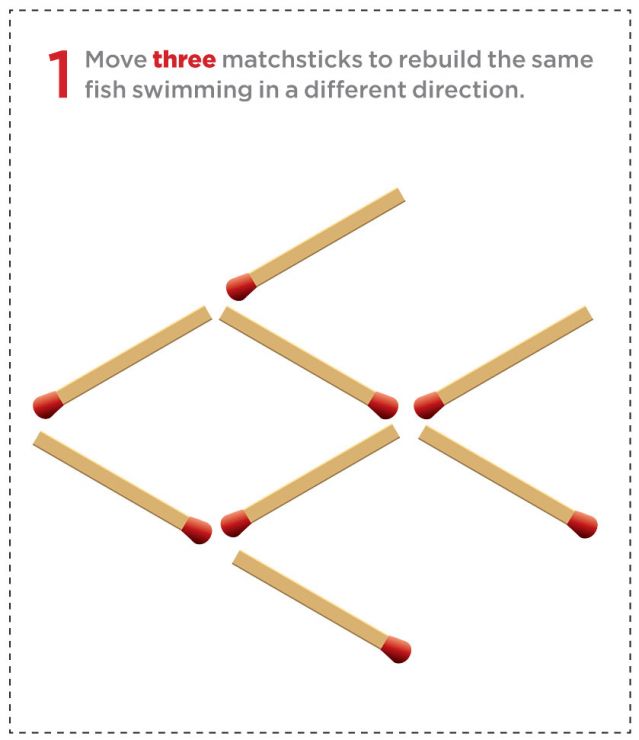PT Puzzle: Shape Shifters
Impossible problem? Depends how you look at it
By Katherine Schreiber Cullen published March 13, 2012 - last reviewed on December 21, 2020
How can we get ourselves out of sticky situations? To find solutions, we need to concentrate, recall relevant information, recontextualize ideas, and map out plans, says neuroscientist Richard Restak. Kickstart your creative thinking by exercising each ability. —Katherine Schreiber
Here are three puzzles that tempt you to focus on the wrong thing. If you focus on which matchsticks to move, the puzzles are hard to solve. Try focusing instead on which matchsticks to leave alone.

When you reconfigure the matchsticks in your mind, explains Restak, "you're recruiting your parietal lobe—an area of the brain associated with understanding place, situation, and space." Then, to keep track of all the mental moves needed to solve the puzzle, "you're recruiting your brain's frontal lobe, involved in planning and organization."

Stuck? Puzzle designer Scott Kim says it's not cheating to jump straight to the solution. "Taking a peek at the answer," Kim explains, "gives you an opportunity to figure out how you would have gotten to it." You can piece together the logic and examine where you went wrong. "The goal here isn't necessarily to come up with the right answer," adds Kim. "It's more about diagnosing your reasoning and learning from your mistakes"—whether you're moving mental matchsticks or troubleshooting a problem at work.


